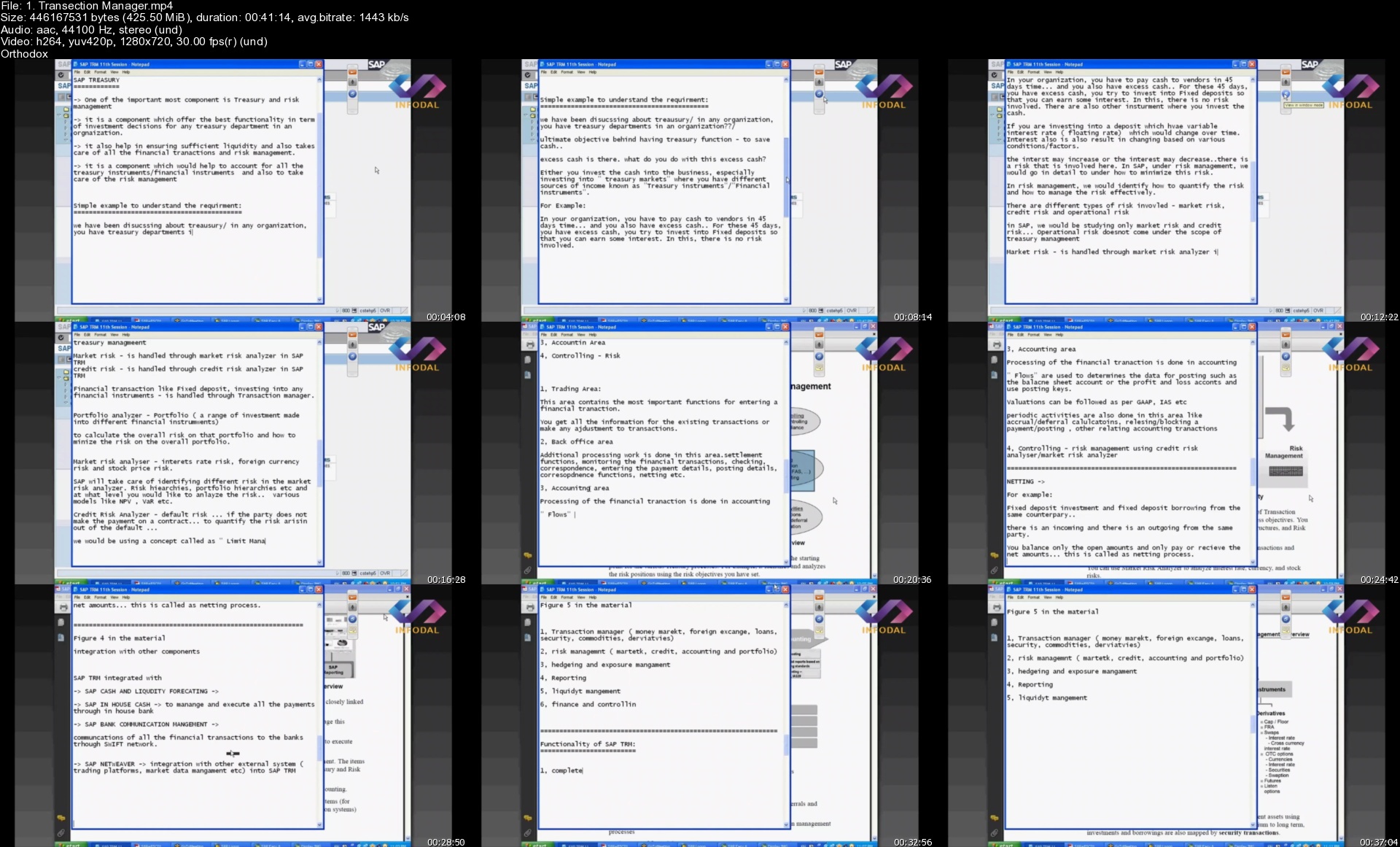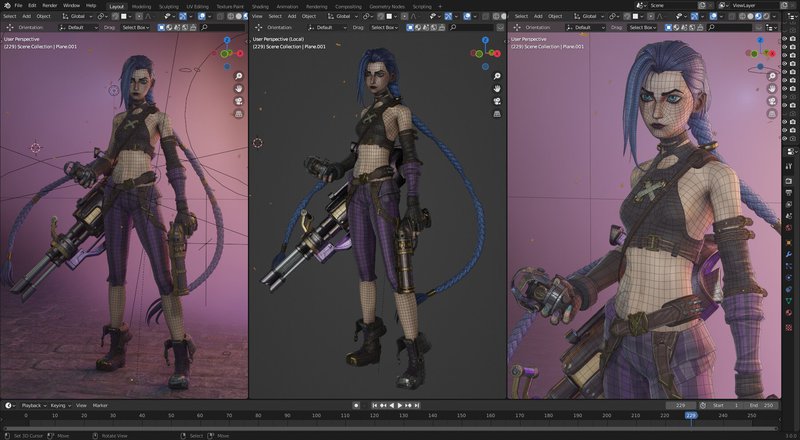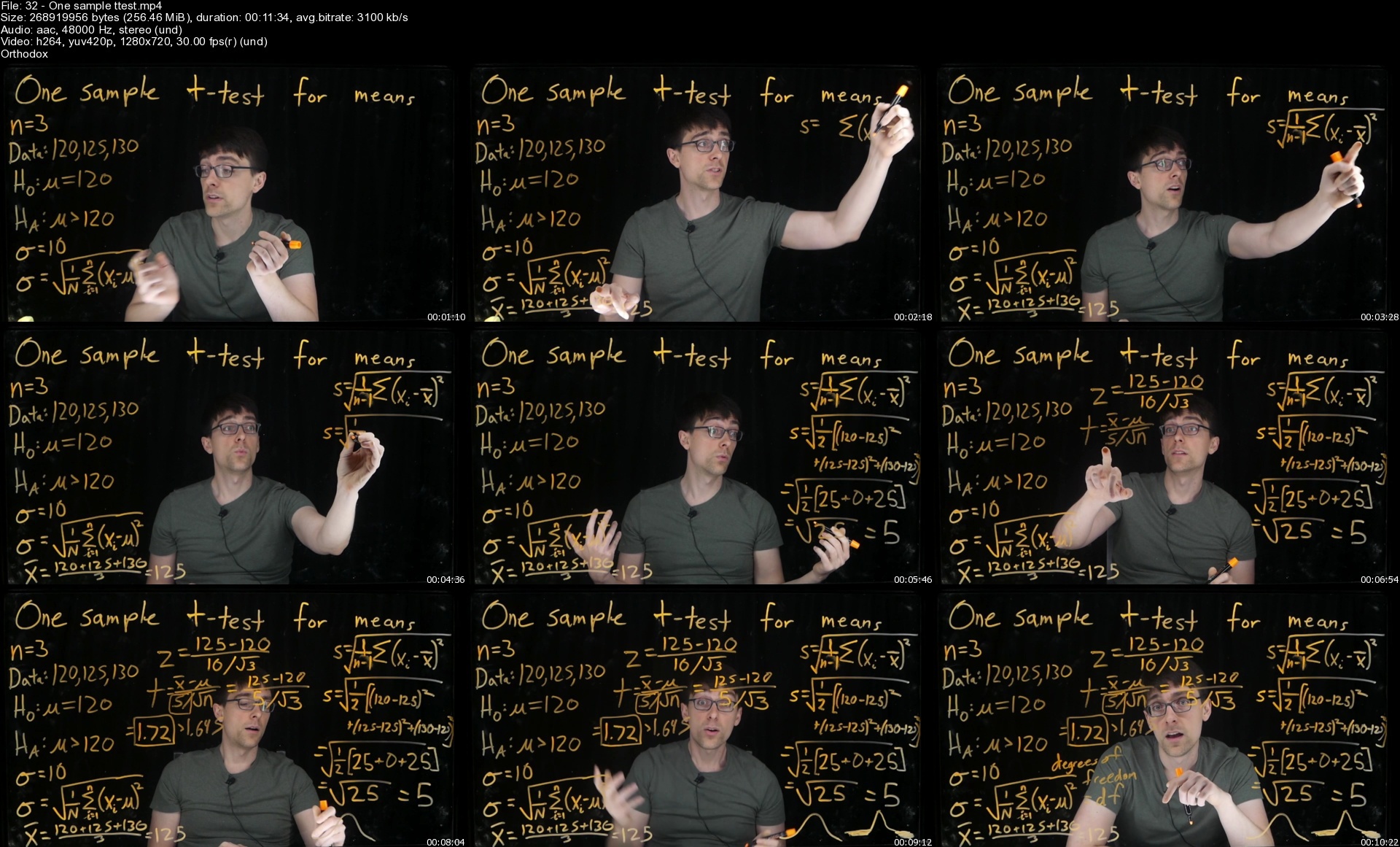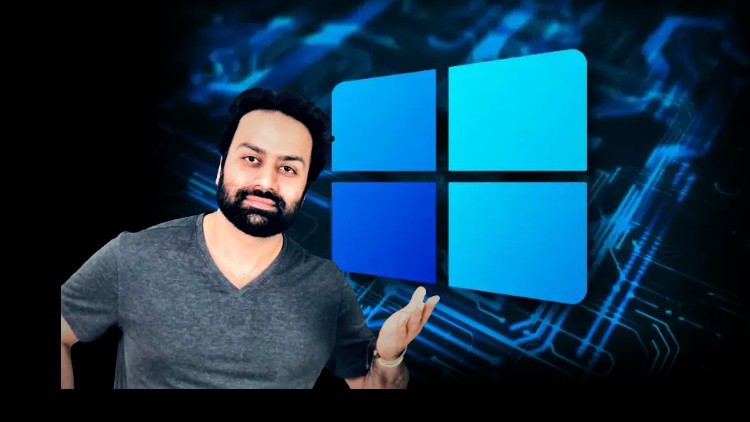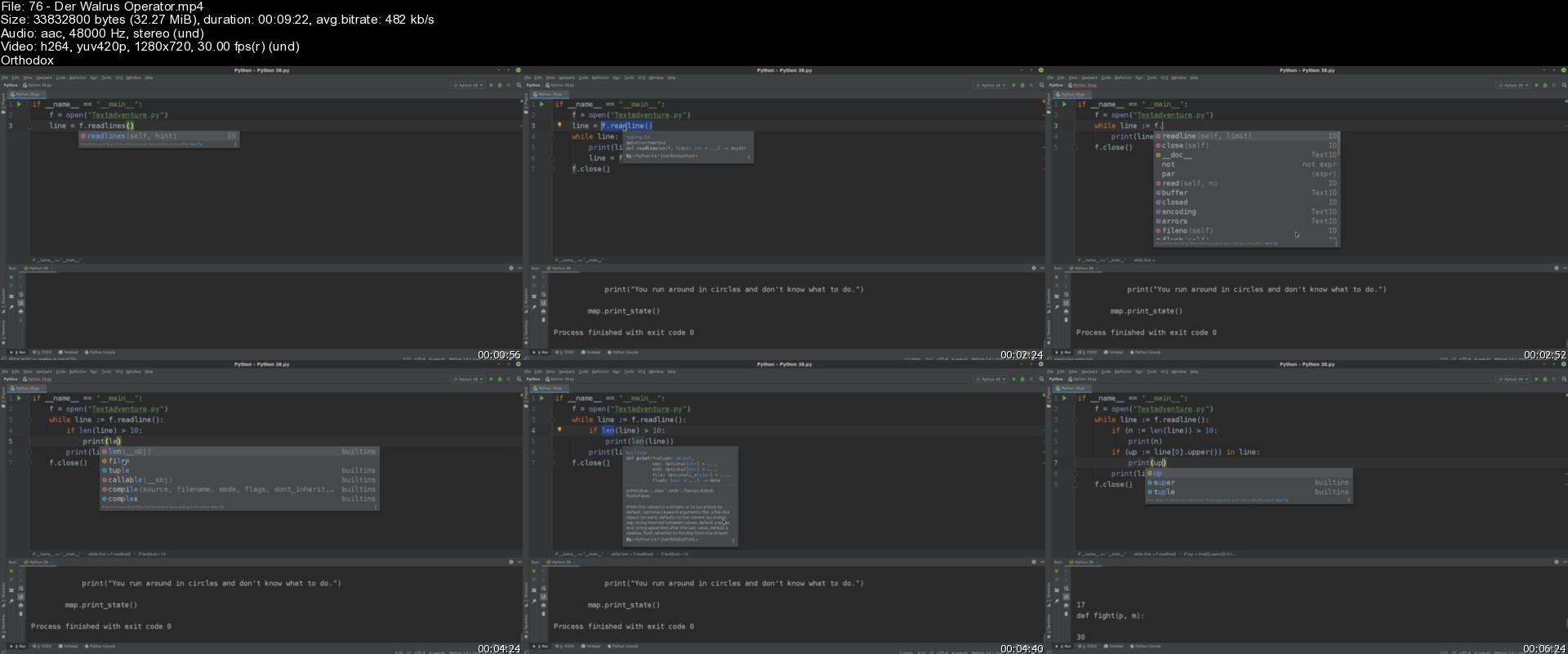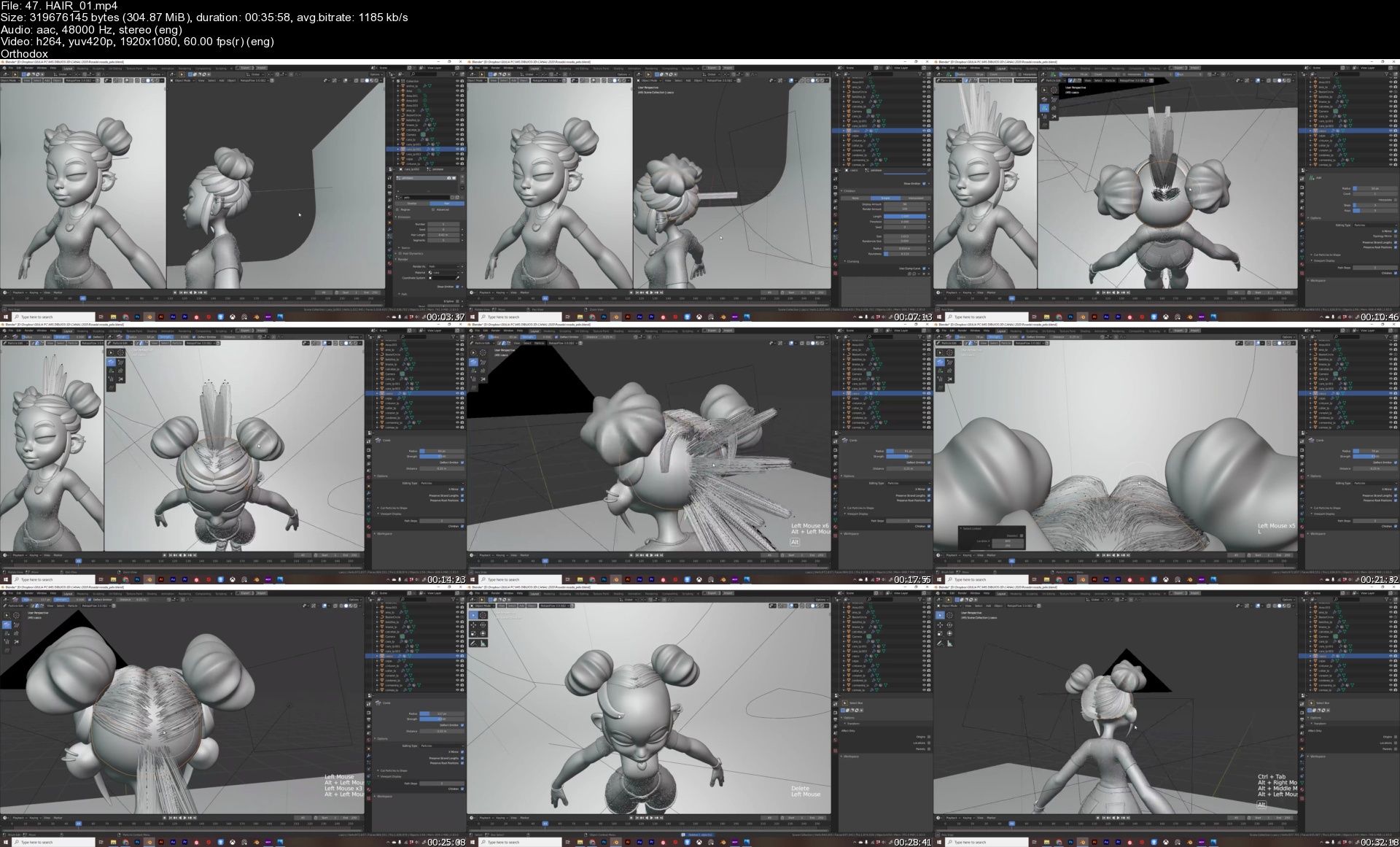Level 1 Cfa? Exam Prep Bootcamp (Part 1/2)
Last updated 3/2022
MP4 | Video: h264, 1280x720 | Audio: AAC, 44.1 KHz
Language: English | Size: 5.68 GB | Duration: 26h 3m
Level 1 CFA? Bootcamp: Ethics, Quantiative Methods, Corporate Finance, Economics, and Alternative Investments
What you'll learn
Prepare for the CFA? Level 1 exam
Earn one of the most prestigious designations in finance and investment management
Acquire a solid understanding of key business and finance disciplines
Impress interviewers by showing a strong an understanding of finance fundamentals and advanced topics concepts
Study Ethics, Quantitative Methods (Statistics and Probability), Corporate Finance, Economics, and Alternative Investments
Understand the Global Investment Performance Standards (GIPS)
Learn about the time value of money, discounted cash flow applications, statistical concepts and market returns, probability and probability distributions, sampling and estimation, hypothesis testing, and technical analysis
Acquire an understanding of corporate governance, capital budgeting, cost of capital, measures of leverage, and working capital management
Gain an understanding of fundamental topics like demand and supply, firm and market structure, economic growth, business cycles, monetary trade and capital flows, and currency exchange rates
Requirements
No prior experience is required. We will start from the very basics
Description
We will help you prepare for the CFA? Level 1 Exam.A record number of candidates register to take the CFA? exams. Pursuing the credential is a rigorous process, which requires a lot of time and effort. And yet, many people around the world sign up for the CFA? exams. The reason is that a CFA? designation can move your resume to the top of the pile in a competitive job market.We are proud to present you a training bootcamp created by 365's team that aims to prepare you for the CFA? Level 1 exam provided by CFA Institute.The five topics we will cover here are:? Ethical and Professional Standards? Portfolio Management? Economics? Corporate Finance? Alternative InvestmentsThis Bootcamp has been designed as a supplement to the official study materials provided by the CFA Institute and should not be seen as a substitute for these materials. Our goal is to make your life a bit easier. The lessons we have prepared are consistent with the current CFA? Level 1 curriculum and exam structure (and will continue to be updated to ensure consistency over time). We cover all Learning Outcome Statements (LOS), and we have dedicated a separate video to each LOS. This ensures that together we will study the concepts that are likely to be tested on the exam.Why take our Bootcamp?? A successful track record on Udemy - over 1,750,000 students have enrolled in our courses? Experienced team - the authors of this course are finance professionals who have acquired significant practical experience (they have worked for companies like HSBC, Morgan Stanley, PwC, Coca Cola, etc.)? Carefully scripted and animated tutorials with plenty of real-world examples? A variety of practice questions at the end of each Reading to test your progress? Extensive case studies that will help you reinforce what you have learned? Excellent support: If you don't understand a concept or you simply want to drop us a line, you'll receive an answer in one or two business days? Dynamic: We don't want to waste your time! The instructors keep up a very good pace throughout the whole course.We will cover a wide variety of topics, including:EthicsEthics and trust in the investment profession, Code of Ethics and Standards of Professional Conduct, the Global Investment Performance Standards (GIPS)Quantitative MethodsThe time value of money, Discounted cash flow applications, Statistical concepts and market returns, Probability concepts, Common probability distributions, Sampling and estimation, Hypothesis testing, Technical analysisCorporate FinanceCorporate governance, Capital budgeting, Cost of capital, Measures of leverage, Working capital managementEconomicsDemand and supply analysis, The firm and market structures, Aggregate output and economic growth, Understanding business cycles, Monetary and fiscal policy, International trade and capital flows, Currency exchange ratesAlternative InvestmentsCategories of alternative investments, Potential benefits of alternative investments, Issues in valuing and calculating returns on alternative investmentsEach of these topics builds on the previous ones. And this is one of the considerable benefits you will gain by taking our Bootcamp. You will acquire valuable theoretical and practical skills that are necessary for a successful career in the world of investment management, investment banking, and corporate finance.Moreover, our focus is to teach topics that flow smoothly and complement each other. The course covers exam concepts at a fraction of the cost of traditional programs (not to mention the amount of time you will save).We are happy to offer an unconditional 30-day money-back in full guarantee. No risk for you. The content of the course is excellent, and this is a no-brainer for us, as we are certain you will love it.Why wait? Every day is a missed opportunity.Click the "Buy Now" button and become a part of our program today.*CFA Institute does not endorse, promote, review or warrant the accuracy or quality of the products or services offered by 365 Careers or Udemy. The CFA Institute Logo, CFA?, and Chartered Financial Analyst? are just a few of the trademarks owned by CFA Institute.** *Please note that the Bootcamp will be split into two courses on Udemy. The reason is that the sheer length of topics we have covered does not allow us to have a single course;
Overview
Section 1: What Does the Course Cover?
Lecture 1 What Does the Course Cover?
Lecture 2 Welcome Gift
Section 2: How to Use a Financial Calculator
Lecture 3 Introduction
Lecture 4 Setting Up the Financial Calculator
Lecture 5 Basic Calculations
Lecture 6 Time Value of Money
Lecture 7 Cash Flow Analysis
Lecture 8 Statistics
Lecture 9 Depreciation and Breakeven
Section 3: 365 Formula Sheet
Lecture 10 365 Formula Sheet
Section 4: Ethics - Ethics and Trust in the Investment Profession
Lecture 11 LOS Overview
Lecture 12 Ethics Explained
Lecture 13 The Role of a Code of Ethics for Defining a Profession
Lecture 14 Challenges to Ethical Behavior
Lecture 15 The Need for High Ethical Standards in the Investment Industry
Lecture 16 Ethical vs. Legal Standards
Lecture 17 CFA? Ethical Decision-Making Framework
Section 5: Ethics - Code of Ethics and Standards of Professional Conduct
Lecture 18 LOS Overview
Lecture 19 Structure of the CFA? Institute Professional Conduct Program
Lecture 20 Components of the Code of Ethics? and the Standards of Professional Conduct?
Lecture 21 Ethical Responsibilities Required by the Code and Standards
Lecture 22 Practice Questions (Code of Ethics and Standards of Professional Conduct)
Lecture 23 Practice Questions with Answers (Code of Ethics and Standards of Professional..)
Section 6: Ethics - Guidance for Standard I-VII
Lecture 24 LOS Overview
Lecture 25 Professionalism, I A Knowledge Of The Law
Lecture 26 Professionalism, I B Independence and Objectivity
Lecture 27 Professionalism, I C Misrepresentation
Lecture 28 Professionalism, I D Misconduct
Lecture 29 Integrity of Capital Markets, II A Material Non-Public Information
Lecture 30 Integrity of Capital Markets, II B Market Manipulation
Lecture 31 Duties to Clients, III A Loyalty, Prudence, and Care
Lecture 32 Duties to Clients, III B Fair Dealing
Lecture 33 Duties to Clients, III C Suitability
Lecture 34 Duties to Clients, III D Performance Presentation
Lecture 35 Duties to Clients, III E Preservation of Confidentiality
Lecture 36 Duties to Employers, IV A Loyalty
Lecture 37 Duties to Employers, IV B Additional Compensation Arrangements
Lecture 38 Duties to Employers, IV C Responsibilities of Supervisors
Lecture 39 Investment Analysis, Recommendations, and Actions, V A Diligence and Reasonable
Lecture 40 Investment Analysis, Recommendations, and Actions, V B Communication With Client
Lecture 41 Investment Analysis, Recommendations, and Actions, V C Record Retention
Lecture 42 Conflicts of Interest, VI A Disclosure of Conflicts
Lecture 43 Conflicts of Interest, VI B Priority of Transactions
Lecture 44 Conflicts of Interest, VI C Referral Fees
Lecture 45 Responsibilities as a CFA? Institute Member or CFA? Candidate, VII A
Lecture 46 Responsibilities as a CFA? Institute Member or CFA? Candidate, VII B
Lecture 47 Standards of Professional Conduct - Overview
Section 7: Ethics - Introduction to the Global Investment Performance Standards?
Lecture 48 LOS Overview
Lecture 49 The Global Investment Performance Standards?
Lecture 50 Composites Construction
Lecture 51 Requirements for Verification
Section 8: Ethics - Global Investment Performance Standards (GIPS?)
Lecture 52 LOS Overview
Lecture 53 Key Features of GIPS?
Lecture 54 Fundamentals of Compliance
Lecture 55 Scope of GIPS?
Lecture 56 GIPS? Implementation
Lecture 57 Overview of the Global Investment Performance Standards?
Lecture 58 Practice Questions (Global Investment Performance Standards?)
Lecture 59 Practice Questions with Answers (Global Investment Performance Standards?)
Lecture 60 GIPS? Overview
Section 9: Quantitative Methods - Time Value of Money
Lecture 61 LOS Overview
Lecture 62 Time Value of Money
Lecture 63 How to Use a Timeline to Depict Time Value of Money Problems
Lecture 64 How to Interpret Interest Rates
Lecture 65 Interest Rates as the Sum of Several Components
Lecture 66 Calculate and Interpret an Investment's Effective Annual Rate
Lecture 67 The Relationship between PV and FV
Lecture 68 Solving Different Time Value of Money Problems
Lecture 69 The Importance of Compounding Frequencies
Lecture 70 Ordinary Annuity
Lecture 71 Annuity Due
Lecture 72 Perpetuity
Lecture 73 FV and PV of Unequal Cash Flows
Lecture 74 Calculate the Monthly Payment of a Mortgage Loan
Lecture 75 Let's Calculate the Number of Years it Takes to Achieve a Financial Goal
Lecture 76 What is the Rate of Return of an Investment?
Lecture 77 The Cash Flow Additivity Principle
Lecture 78 Practice Questions (Quantitative Methods - Time Value of Money)
Lecture 79 Practice Questions (Answers with explanations)
Section 10: Bonus-Discounted Cash Flow Applications-Not Included in Level 1 2020 Curriculum
Lecture 80 LOS Overview
Lecture 81 How to Interpret the Net Present Value (NPV)
Lecture 82 Calculate NPV
Lecture 83 Calculate an Investment's Internal Rate of Return (IRR)
Lecture 84 Compare NPV and IRR
Lecture 85 The Holding Period Return
Lecture 86 The Money-Weighted Rate of Return
Lecture 87 The Time-Weighted Rate of Return
Lecture 88 Evaluate the Performance of Money Market Instruments
Lecture 89 Alternatives to the Bank Discount Yield
Lecture 90 Convert Among Yield Measures
Lecture 91 Practice Questions (Quantitative Methods - Discounted cash flow applications)
Lecture 92 Practice Questions (Answers with explanations)
Section 11: Quantitative Methods - Statistical concepts and Market returns
Lecture 93 LOS Overview
Lecture 94 Fundamental Concepts of Statistics
Lecture 95 Measurement Scales
Lecture 96 Parameter, Sample statistic, and Frequency Distribution
Lecture 97 Interpret Frequency Distributions
Lecture 98 Graphical Representation
Lecture 99 Measures of Central Tendency
Lecture 100 Measures of Central Tendency - Mean, Median, Mode
Lecture 101 Quartiles, Quintiles, Deciles and Percentiles
Lecture 102 Range and Mean Absolute Deviation
Lecture 103 Variance and Standard Deviation
Lecture 104 Semi-variance and Semi-deviation
Lecture 105 Chebyshev Inequality
Lecture 106 Coefficient of Variation and Sharpe Ratio
Lecture 107 Explain Skewness
Lecture 108 Behavior of the Mean, Median, and Mode
Lecture 109 Sample Skewness
Lecture 110 Kurtosis
Lecture 111 Compare the Use of Arithmetic and Geometric Means
Section 12: Quantitative Methods - Probability Concepts
Lecture 112 LOS Overview
Lecture 113 Probability Definitions
Lecture 114 The Two Defining Properties of Probability
Lecture 115 Defining Probabilities as Odds
Lecture 116 Dependent Events vs. Independent Events
Lecture 117 Conditional Probability
Lecture 118 The Addition Rule
Lecture 119 The Multiplication Rule
Lecture 120 The Total Probability Rule
Lecture 121 Summary Lesson: Addition, Multiplication, and Total Probability Rules
Lecture 122 Practical example: Total Probability Rule
Lecture 123 Conditional Expectation in Investment Applications
Lecture 124 The Relationship between Financial Securities
Lecture 125 Calculating Covariance
Lecture 126 Correlation
Lecture 127 Expected Value
Lecture 128 Calculating the Variance of a Random Variable
Lecture 129 Portfolio Expected Returns and Variance
Lecture 130 Covariance Based on a Joint Probability Function
Lecture 131 Bayes Formula
Lecture 132 Principles of Counting
Section 13: Quantitative Methods - Common probability distributions
Lecture 133 LOS Overview
Lecture 134 Defining a Random Variable
Lecture 135 Discrete and Continuous Random Variable
Lecture 136 Cumulative Distribution Function
Lecture 137 Practical Exercise
Lecture 138 Uniform, Bernoulli, and Binomial Random Variables
Lecture 139 Discrete Distribution Functions
Lecture 140 Discrete Uniform Distribution
Lecture 141 Binomial Distribution
Lecture 142 Practical Exercise
Lecture 143 Continuous Uniform Distribution
Lecture 144 Properties of the Normal Distribution
Lecture 145 Univariate vs. Multivariate Distributions
Lecture 146 Comparison between Conclusions Draw with Chebyshev and Normal Distribution
Lecture 147 Standard Normal Distribution
Lecture 148 Using Z-values to Calculate Probabilities
Lecture 149 Safety-first Ratio, Roy's Criterion for Portfolio Optimization
Lecture 150 Lognormal Distribution
Lecture 151 Discrete vs. Continuous Compounding
Lecture 152 Monte Carlo Simulation
Lecture 153 Historical Simulation
Section 14: Quantitative Methods - Sampling and Estimation
Lecture 154 LOS Overview
Lecture 155 Statistical Inferences
Lecture 156 Sampling Error
Lecture 157 Stratified Random Sampling
Lecture 158 Time Series vs. Cross-sectional Data
Lecture 159 Central Limit Theorem
Lecture 160 Standard Error of the Sample Mean
Lecture 161 Estimator of a Population Parameter
Lecture 162 Confidence Intervals
Lecture 163 Student's T-distribution
Lecture 164 Calculating Confidence Intervals - Known Variance
Lecture 165 Calculating Confidence Intervals - Unknown Variance
Lecture 166 Calculating Confidence Intervals - Variance Unknown, Large Sample Size
Lecture 167 Sampling Bias
Section 15: Quantitative Methods - Hypothesis Testing
Lecture 168 LOS overview
Lecture 169 Defining Hypothesis Testing
Lecture 170 One and Two-sided Hypothesis Tests
Lecture 171 What Is a Test Statistic?
Lecture 172 The Type I and Type II Errors. Definition of Significance Level
Lecture 173 What Is a Decision Rule?
Lecture 174 How Do We Measure the Power of a Test?
Lecture 175 The Relation Between Confidence Intervals and Hypothesis Tests
Lecture 176 Statistically vs. Economically Meaningful Results
Lecture 177 How Do We Measure and Use P-values?
Lecture 178 Hypothesis Testing - Variance Known
Lecture 179 Hypothesis Testing - Variance Unknown
Lecture 180 Hypothesis Testing - Equality of Means (Equal and Unknown Variances)
Lecture 181 Hypothesis Testing - Equality of Means (Unequal and Unknown Variances)
Lecture 182 Hypothesis Testing - The Difference of Two Means
Lecture 183 Testing for the Variance - Chi-Square Test
Lecture 184 Parametric vs. Nonparametric Tests
Section 16: Corporate Finance - Corporate Governance and ESG: An Introduction
Lecture 185 LOS Overview
Lecture 186 Corporate Governance: Description
Lecture 187 Stakeholder Groups and Their Interests
Lecture 188 Stakeholder Conflicts
Lecture 189 Stakeholder Management
Lecture 190 Governance Mechanisms
Lecture 191 Board of Directors
Lecture 192 Board of Directors Committees
Lecture 193 Factors Influencing Corporate Governance
Lecture 194 Corporate Governance: Risks and Benefits
Lecture 195 Principles of Corporate Governance Analysis
Lecture 196 Environmental Factors and Social Considerations in Investment Analysis
Lecture 197 ESG Investing
Lecture 198 ESG Investing vs Fiduciary Duties
Lecture 199 Practice Questions (Corporate Governance and ESG: An Introduction)
Lecture 200 Practice Questions (Answers with explanations)
Section 17: Corporate Finance - Capital Budgeting
Lecture 201 LOS Overview
Lecture 202 The Capital Budgeting Process
Lecture 203 Basic Principles of Capital Budgeting
Lecture 204 Engaging with Multiple Projects at a Time
Lecture 205 Net Present Value (NPV)
Lecture 206 Net Present Value: Example
Lecture 207 Internal Rate of Return (IRR)
Lecture 208 Payback Period
Lecture 209 Discounted Payback Period (DPBP)
Lecture 210 Average Accounting Rate of Return (AAR)
Lecture 211 Profitability Index (PI)
Lecture 212 NPV Profile
Lecture 213 Compare the NPV and IRR Methods
Lecture 214 Problems Associated with IRR
Lecture 215 The Relation Between NPV and Share Price
Lecture 216 Practice Questions (Capital Budgeting)
Lecture 217 Practice Questions (Answers with explanations)
Section 18: Corporate Finance - Cost of Capital
Lecture 218 LOS Overview
Lecture 219 The Weighted Average Cost of Capital (WACC)
Lecture 220 Effect of Taxes on the Cost of Capital
Lecture 221 Use of Target Capital Structure in Estimating WACC
Lecture 222 Marginal Cost of Capital (MCC)
Lecture 223 The MCC's Role in Determining the NPV
Lecture 224 Calculate the Cost of Debt
Lecture 225 Cost of Preferred Stock
Lecture 226 Calculate the Cost of Equity
Lecture 227 Components of CAPM
Lecture 228 Calculate the Cost of Equity with the Dividend Discount Model
Lecture 229 Bond Yield Plus Risk Premium Approach
Lecture 230 Calculate and Interpret Beta
Lecture 231 Calculate a Project's Beta
Lecture 232 Estimate the Cost of Equity for Developing Countries
Lecture 233 Marginal Cost of Capital Schedule
Lecture 234 Flotation Costs
Lecture 235 Practice Questions (Cost of Capital)
Lecture 236 Practice Questions (Answers with explanations)
Section 19: Corporate Finance - Measures of Leverage
Lecture 237 LOS Overview
Lecture 238 Measures of Leverage
Lecture 239 Business and Financial Risk
Lecture 240 Calculate the Degree of Operating Leverage (DOL)
Lecture 241 Calculate the Degree of Financial Leverage (DFL)
Lecture 242 Calculate the Degree of Total Leverage (DTL)
Lecture 243 The Effect of Financial Leverage on a Company's NI and ROE
Lecture 244 Calculate the Breakeven Quantity of Sales
Lecture 245 Calculate the Operating Breakeven Quantity of Sales
Lecture 246 Practice Questions (Measures of Leverage)
Lecture 247 Practice Questions (Answers with explanations)
Section 20: Corporate Finance - Working Capital Management
Lecture 248 Working Capital Management (Overview)
Lecture 249 Working Capital Management (Definition)
Lecture 250 Liquidity Management
Lecture 251 Liquidity Measures
Lecture 252 Asset Management Ratios
Lecture 253 Payables Turnover Ratio
Lecture 254 Liquidity Analysis (Example)
Lecture 255 Operating and Cash Conversion Cycles
Lecture 256 Net Daily Cash Position
Lecture 257 Yields on Short-Term Securities
Lecture 258 Investment Policy Statement
Lecture 259 Accounts Receivable Management
Lecture 260 Inventory Management
Lecture 261 Accounts Payable Management
Lecture 262 Short-term Bank Funding Sources
Lecture 263 Short-term Non-bank Funding Sources
Lecture 264 Practice questions (Working Capital Management)
Lecture 265 Practice questions (Working Captial Management)-answers
Section 21: Economics - Topics in Demand and Supply Analysis
Lecture 266 LOS Overview
Lecture 267 Basic Concepts
Lecture 268 Elasticity
Lecture 269 Income and Substitution Effects
Lecture 270 Exceptions to the Law of Demand
Lecture 271 Diminishing Marginal Returns
Lecture 272 Break-even and Shutdown Analysis
Lecture 273 Economies and Diseconomies of Scale
Lecture 274 Practice Questions (Demand and Supply Analysis)
Lecture 275 Practice Questions with Answers (Demand and Supply Analysis)
Section 22: Economics - The Firm and Market Structures
Lecture 276 LOS Overview
Lecture 277 Market Structures
Lecture 278 Perfect Competition
Lecture 279 Monopolistic Competition
Lecture 280 Oligopoly
Lecture 281 Monopoly
Lecture 282 Concentration Measures
Lecture 283 Summary of Market Structures
Lecture 284 Practice Questions (The Firm and Market Structures)
Lecture 285 Practice Questions with Answers (The Firm and Market Structures)
Lecture 286 Supplemental Materials
Section 23: Economics - Aggregate Output, Prices, and Economic Growth
Lecture 287 LOS Overview
Lecture 288 GDP Calculation
Lecture 289 GDP Calculation (Continued)
Lecture 290 Nominal and Real GDP
Lecture 291 The Expenditure Approach
Lecture 292 The Income Approach
Lecture 293 Fiscal Balance and Trade Balance
Lecture 294 Aggregate Demand
Lecture 295 Aggregate Supply
Lecture 296 Shifts in Aggregate Demand
Lecture 297 Shifts in Aggregate Supply
Lecture 298 The Macroeconomic Equilibrium
Lecture 299 The Effect of Combined Changes in AD and AS
Lecture 300 Sources of Economic Growth
Lecture 301 The Production Function
Lecture 302 Practice Questions (Aggregate Output, Prices, and Economic Growth)
Lecture 303 Practice Questions with Answers (Aggregate Output, Prices, and Economic Growth)
Section 24: Understanding Business Cycles
Lecture 304 LOS Overview
Lecture 305 Business Cycle Phases
Lecture 306 Resource Use and the Business Cycle
Lecture 307 Housing Market and the Business Cycle
Lecture 308 External Trade Sector and the Business Cycle
Lecture 309 Theories of the Business Cycle
Lecture 310 Types of Unemployment
Lecture 311 Unemployment Measures
Lecture 312 Inflation
Lecture 313 Indexes Used to Measure Inflation
Lecture 314 Uses and Limitations of Inflation Measures
Lecture 315 Cost-Push and Demand-Pull Inflation
Lecture 316 Economic Indicators
Lecture 317 Practice Questions (Understanding Business Cycles)
Lecture 318 Practice Questions with Answers (Understanding Business Cycles)
Section 25: Monetary and Fiscal Policy
Lecture 319 LOS Overview
Lecture 320 Introduction to Monetary and Fiscal Policy
Lecture 321 Functions of Money
Lecture 322 Definitions of Money
Lecture 323 The Money Creation Process
Lecture 324 The Quantity Theory of Money
Lecture 325 Theories of Money Demand and Supply
Lecture 326 The Fisher Effect
Lecture 327 Roles and Objectives of Central Banks
Lecture 328 Costs of Expected and Unexpected Inflation
Lecture 329 Monetary Policy Tools
Lecture 330 The Monetary Transmission Mechanism
Lecture 331 Qualities of Effective Central Banks
Lecture 332 Monetary Policy and Economic Growth
Lecture 333 Inflation, Interest Rate and Exchange Rate Targeting
Lecture 334 Expansionary vs Contractionary Monetary Policy
Lecture 335 Monetary Policy Limitations
Lecture 336 Roles and Objectives of Fiscal Policy
Lecture 337 Fiscal Policy Tools
Lecture 338 Effective Tax Policy
Lecture 339 Modeling the Impact of Taxes and Government Spending
Lecture 340 The Ricardian Equivalence
Lecture 341 National Debt-to-GDP Indicator
Lecture 342 Fiscal Policy Limitations
Lecture 343 Expansionary vs Contractionary Fiscal Policy
Lecture 344 Monetary and Fiscal Policy Interaction
Lecture 345 Practice Questions (Monetary and Fiscal Policy)
Lecture 346 Practice Questions with Answers (Monetary and Fiscal Policy)
Section 26: International Trade and Capital Flows
Lecture 347 LOS Overview
Lecture 348 Gross Domestic Product vs Gross National Product
Lecture 349 Costs and Benefits of International Trade
Lecture 350 Absolute vs. Comparative Advantage
Lecture 351 Ricardian and Heckscher-Ohlin Models of Trade
Lecture 352 Trade Restrictions
Lecture 353 Trading Blocs
Lecture 354 Capital Restrictions
Lecture 355 Balance of Payments
Lecture 356 Balance of Payments (continued)
Lecture 357 International Trade Organizations
Lecture 358 Practice Questions (International Trade and Capital Flows)
Lecture 359 Practice Questions with Answers (International Trade and Capital Flows)
Section 27: Introduction to Alternative Investments
Lecture 360 LOS Overview
Lecture 361 Alternative Investments vs. Traditional Investments
Lecture 362 Categories of Alternative Investments
Lecture 363 Hedge Funds
Lecture 364 Private Equity
Lecture 365 Real Estate
Lecture 366 Other Types of Alternative Investments
Lecture 367 Benefits of Alternative Investments
Lecture 368 Hedge Funds - Fees and Returns
Lecture 369 Valuation of Alternative Investments
Lecture 370 Risk Management of Alternative Investments
Lecture 371 Practice Questions (Introduction to Alternative Investments)
Lecture 372 Practice Questions with Answers (Introduction to Alternative Investments)
Lecture 373 Completing 100%
CFA? Level 1 candidates,People interested in taking the CFA? exams,Individuals who are interested in a career in finance,Anyone who wants to learn Ethics, Quantitative Methods, Corporate Finance, Economics, Alternative Investments
Homepage
Code:https://anonymz.com/?https://www.udemy.com/course/level-1-cfa-exam-prep-bootcamp/
Code:https://k2s.cc/file/bdad053dfd43c/Level_1_CFA%D0%B1%E2%95%9D_Exam_Prep_Bootcamp_Part_12.part1.rar https://k2s.cc/file/16c624f4b87a0/Level_1_CFA%D0%B1%E2%95%9D_Exam_Prep_Bootcamp_Part_12.part2.rarCode:https://rapidgator.net/file/26808faf328a15086c2e383696c6737f/Level_1_CFA?_Exam_Prep_Bootcamp_Part_12.part1.rar.html https://rapidgator.net/file/437a40abf8120241df299cfc55e40ca4/Level_1_CFA?_Exam_Prep_Bootcamp_Part_12.part2.rar.html

 Our Live Cams
Our Live Cams





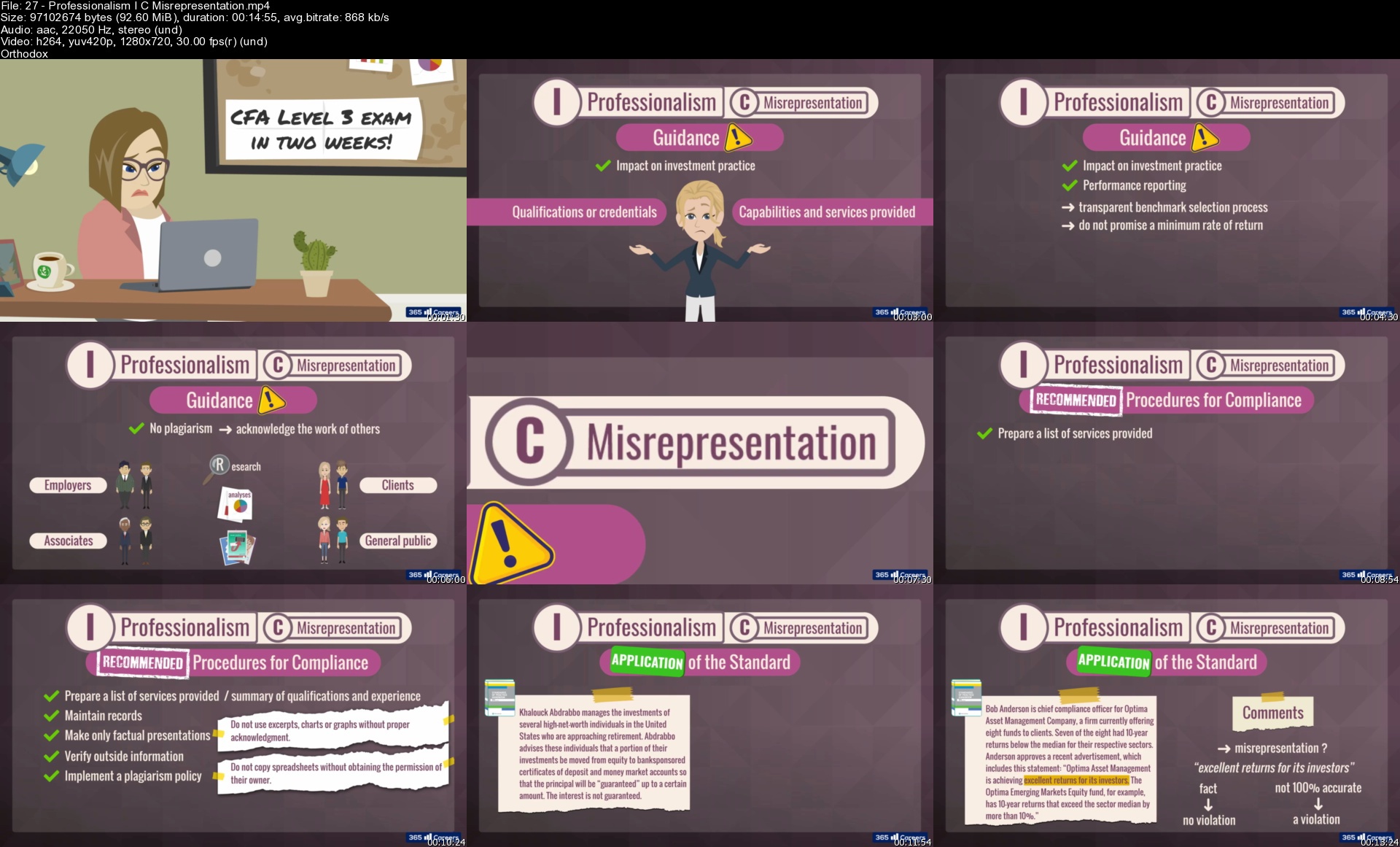

 Reply With Quote
Reply With Quote
